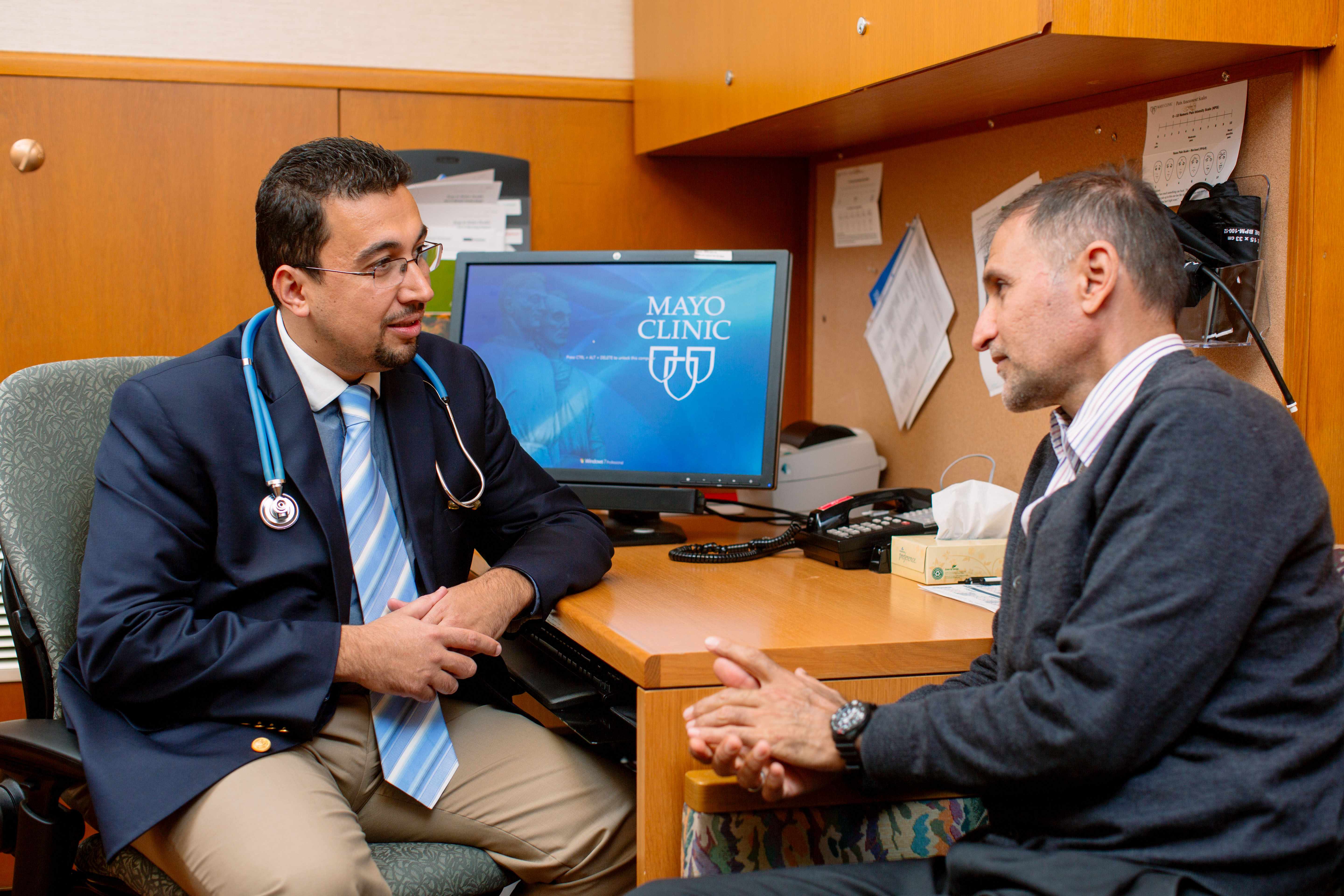-
Featured News
Expert Alert: Study finds value in physician-patient outcome assessment process

ROCHESTER, Minn. — Sometimes a physician thinks the outcome of a patient's treatment is a great success.
Sometimes that patient thinks it was a flop.
That disconnect may go unexpressed by patients or unrecognized by health care providers. Many assessment scoring systems try to assess whether the patient and physician are on the same page regarding outcomes, though many are specific to one medical area. Other assessment scoring systems have poor or unreliable correlation between patient and physician assessments.
That was the motivation for Shawn O'Driscoll, M.D., a Mayo Clinic orthopedic surgeon, to develop an assessment process that would be informative, reliable and flexible enough to use across medical specialties.
"There is no single gold standard among outcome scoring systems," Dr. O'Driscoll says. "One of the challenges of scoring systems is their specificity to a given patient population, procedure or diagnostic category. As a result, they're not as useful when applied to other circumstances."
Over the past few decades, Dr. O'Driscoll developed and refined his own process for assessing how patients and physicians assess outcomes. Called the "Summary Outcome Determination (SOD) Score," he says the process is helpful, and reveals a strong agreement between patient-reported outcomes and those reported by physicians.
A prospective blinded evaluation of the Summary Outcome Determination Score process recently was conducted by Mayo Clinic researchers, including Dr. O'Driscoll. This evaluation found that the "score had strong physician-patient agreement, reliability and internal validity."
"This score has potential to be a metric revealing the value of surgical interventions," says the study, which will be published in Mayo Clinic Proceedings in July. Dr. O'Driscoll is the study's senior author.
The assessment involves a simple form for the patient, physician and a member of the medical staff. All complete a common form independently, choosing a numerical rating and a more descriptive category rating for the patient's outcome, compared to before surgery. There are 20 numerical ratings, from 10 to minus 10, and nine categories, from normal to death. For scoring purposes, a patient-physician agreement index was created to determine how closely the patient and physician agree on outcomes.
The study enrolled 100 patients who had undergone elbow or shoulder surgery. The average interval between the surgery and follow-up was 31 months. According to the study, in the categorical ratings, patients and physicians agreed perfectly or within one category 96% of the time. In the numerical ratings, there were 34 ratings that indicated disagreement between patient and attending surgeons, though the patient rated the outcome better than the surgeon in most cases.
That may come as a surprise to those who assume physicians take a rosier view of the outcome of procedures than patients. The results of this study show the opposite. "When physicians and patients differed in their reported outcomes, the SOD assigned by the (patient) was higher than the score assigned by the physician 72% of the time," the study says.
The information gained from the scoring process helps physicians know more about how patients are doing and over time help physicians in setting expectations for patients, Dr. O'Driscoll says. "If the physician can know what the patients generally think of the outcomes, based on scores retrospectively, the physician is in a much better position to address in advance the patient's likely satisfaction, and adjust treatment and expectations in that direction," he says.
Data from the scoring process also have value in patient education. "When I explain the expected outcomes of a surgical procedure to a patient, I paint a picture of how a group of 100 patients would report outcomes among the nine categories a year or two from now," he says. "Patients find that very helpful and easy to understand."
Assessment scoring systems such as the Summary Outcome Determination Score likely will be part of the national trend toward value-based care, he says. "We are entering an era in which health care delivery, and payment for such care, will be determined by cost effectiveness. It will ultimately be patient satisfaction that will drive decisions on care, and we must have a method by which physician satisfaction and patient satisfaction are in close synchrony."
Dr. O'Driscoll reports that he and the research foundation that he is affiliated with receive royalties from Acumed LLC, Wright Medical Group N.V., and Aircast Inc.
###
About Mayo Clinic Proceedings
Mayo Clinic Proceedings is a monthly peer-reviewed medical journal that publishes original articles and reviews dealing with clinical and laboratory medicine, clinical research, basic science research, and clinical epidemiology. Mayo Clinic Proceedings is sponsored by the Mayo Foundation for Medical Education and Research as part of its commitment to physician education. It publishes submissions from authors worldwide. The journal has been published for more than 90 years and has a circulation of 127,000. Visit the Mayo Clinic Proceedings website to view articles.
About Mayo Clinic
Mayo Clinic is a nonprofit organization committed to clinical practice, education and research, providing expert, comprehensive care to everyone who needs healing. Learn more about Mayo Clinic. Visit the Mayo Clinic News Network.
Media contact:
- Rhoda Madson, Mayo Clinic Public Affairs, 507-284-5005, newsbureau@mayo.edu







